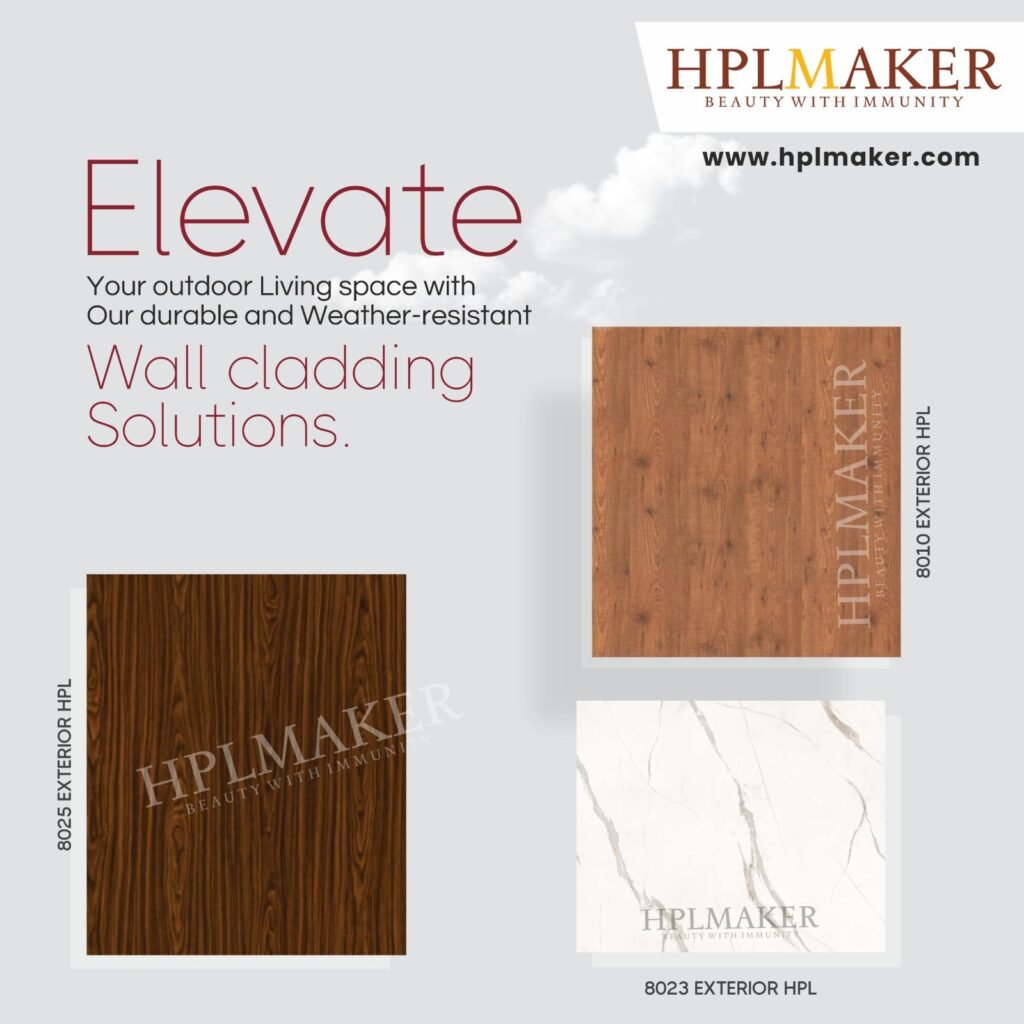Table of Contents
ToggleMDF v/s HPL
Similarity and differences of MDF and HPL
Choose according to the project requirement -
MDF stands for Medium Density Fiberboard and it has made from the mixture of sawdust and glue. Available in different size and thickness to suit the wide range of applications, MDF is one of the widely used products globally. MDF can also be used with wood for wall applications whereas HPL stands for High Pressure Laminates and it is made from kraft papers with the coating of melamine and phenolic resin.
The choice between Medium Density Fiberboard (MDF) and High-Pressure Laminate (HPL) depends on the specific application and the desired properties for the project. Here are some key points to consider for each material:

Medium Density Fiberboard (MDF)
Advantages, disadvantages, and applications
Advantages:
- Smooth Surface: MDF is perfect for veneering or painting because of its smooth surface.
- Consistency: Compared to natural wood, it is more uniform since it lacks knots and grain patterns.
- Workability: Cutting, shaping, and finishing are simple tasks.
- Cost-Effective: It is usually more economically beneficial than solid wood.
Disadvantages:
- Durability: MDF is more prone to damage from large loads and is not as sturdy as plywood or genuine wood.
- Moisture Sensitivity: If exposed to moisture, it may swell and distort, which makes it less appropriate for moist situations.
- Chemical Emissions: Formaldehyde, a potentially harmful substance, can be released by MDF which is a health concern.
High-Pressure Laminate (HPL)
Advantages, disadvantages, and applications
Advantages:
- Durability: HPL exhibits exceptional resilience against abrasions, impacts, and normal wear and tear.
- Moisture Resistance: It works well in damp areas, so bathrooms and kitchens are good places to use it.
- Variety: Wood grains and solid colors are among the many hues, patterns, and finishes that are offered.
- Low Maintenance: Cleaning and upkeep are simple.
Disadvantages:
- Cost: May be more costly than MDF, particularly when it comes to higher-end finishes.
- Workability: Needs specialized tools and is more challenging to cut and shape than MDF.
- Appearance: Although HPL can imitate the appearance of natural materials, actual stone or wood may have more depth and authenticity.
Applications:
– MDF is commonly used for indoor furniture, cabinetry, shelving, and decorative projects where a smooth finish is desired and moisture exposure is minimal.
– HPL is ideal for countertops, tabletops, wall panels, and other surfaces that require high durability and moisture resistance.
Conclusion:
“For high-traffic areas and surfaces that need to withstand wear and tear, HPL is the better choice.
Selecting the right material depends on the specific needs of your project, including environmental conditions, budget, and desired aesthetics


